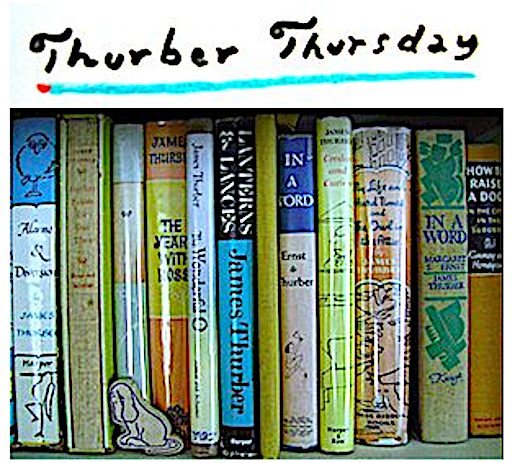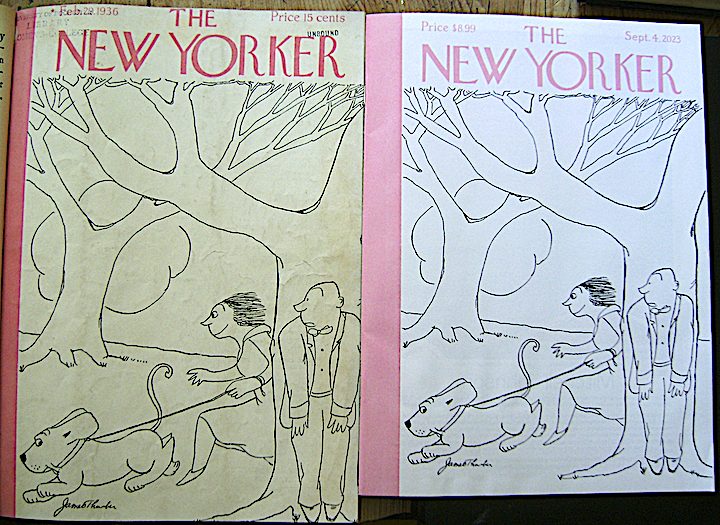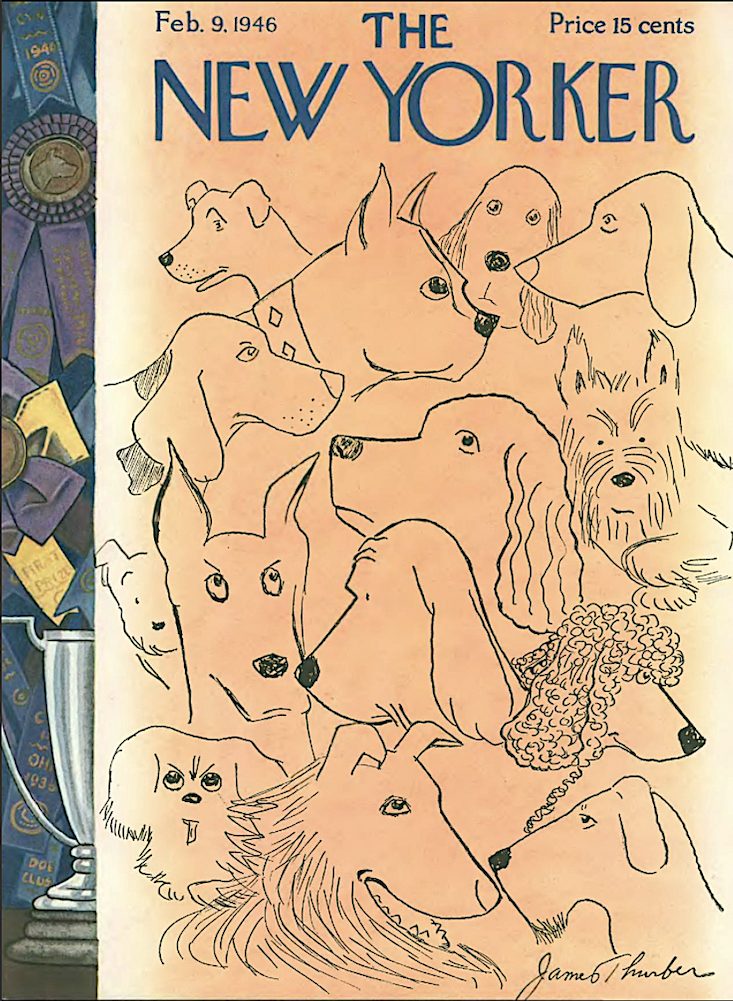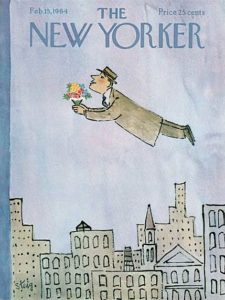Six Covers
In his thirty-four years as a New Yorker contributor, James Thurber did six covers for the magazine.
The covers, shown above, are dated, left to right: February 29, 1936, April 29, 1939, April 27, 1940, July 5, 1941, October 3, 1942, February 9, 1946. You might remember that the February ’36 cover was brought back as a cover in modern times, appearing September 4, 2023:
In a recent auction, this piece was offered (and sold). Obviously a very close relative to the February ’36 cover…
The April 29, 1939 cover of The World’s Fair contains a special treat: Carl Rose’s terrif map of the Fair:
and within the issue there’s more Thurber: Part four of his series, Fables For Our Time:
When I got hold of a copy of the wonderful, A Mile and A Half Of Lines: The Art Of James Thurber,* I was pleased to see the below cover was included in its uncropped state (check out the book to see it yourself).
A Thurber collection (published in 1994), People Have More Fun Than Anybody, (edited by Michael Rosen, who also edited A Mile And A Half Of Lines), used the April 27, 1940 cover for its cover:
This being the 4th of July, it makes perfect sense to end the post with Thurber’s July 5th, 1941 cover. 
I’ve always wondered if Thurber was messin’ with William Steig a bit with this cover, putting the Thurber stamp on a situation very similar to Steig’s July 3, 1937 cover. Steig focuses on the boy lighting the firecracker. The parents scurry away. Thurber focuses on the wife (of course!). The rest of the family are worried, most especially the boy.
___________________________________________________
A-Z Entries for Carl Rose, William Steig, and James Thurber


Carl Rose Born, New York City; died, Rowayton, Ct., June 20, 1971, age 68. New Yorker work: 1925 – 1971. Collection; One Dozen Roses (Random House, 1946). Note: this collection contains essays by Rose on cartoon themes. Especially of interest is his essay concerning Harold Ross, “An Artist’s Best Friend is His Editor”. Carl Rose will forever be linked to E.B. White for the December 8, 1928 New Yorker cartoon of the mother saying to her child, “It’s broccoli, dear.” and the child responding, “I say it’s spinach, and I say the hell with it.” The drawing was by Rose, the caption was adapted by White from Rose’s original idea (for a slighty expanded explanation go here). Rose also had a Thurber connection. In 1932, Rose submitted a drawing captioned, “Touche!” of two fencers, one of whom has just cut off the head of the other. Harold Ross ( according to Thurber in The Years With Ross) thinking the Rose version “too bloody” suggested Thurber do the drawing because “Thurber’s people have no blood. You can put their heads back on and they’re as good as new.” The drawing appeared December 3, 1932.
William Steig Born in Brooklyn, NY, Nov. 14, 1907, died in Boston, Mass., Oct. 3, 2003. In a New Yorker career that lasted well over half a century and a publishing history that contains more than a cart load of books, both children’s and otherwise, it’s impossible to sum up Steig’s influence here on Ink Spill. He was among the giants of the New Yorker cartoon world, along with James Thurber, Saul Steinberg, Charles Addams, Helen Hokinson and Peter Arno. Lee Lorenz’s World of William Steig (Artisan, 1998) is an excellent way to begin exploring Steig’s life and work. New Yorker work: 1930 -2003.

James Thurber Born, Columbus, Ohio, December 8, 1894. Died 1961, New York City. New Yorker work: 1927 -1961, with several pieces run posthumously. According to the New Yorker’s legendary editor, William Shawn, “In the early days, a small company of writers, artists, and editors — E.B. White, James Thurber, Peter Arno, and Katharine White among them — did more to make the magazine what it is than can be measured.”
Key cartoon collection: The Seal in the Bedroom and Other Predicaments (Harper & Bros., 1932). Key anthology (writings & drawings): The Thurber Carnival (Harper & Row, 1945). There have been a number of Thurber biographies. Burton Bernstein’s Thurber (Dodd, Mead, 1975) and Harrison Kinney’s James Thurber: His Life and Times (Henry Holt & Co., 1995) are essential. Website
_________________________
*Full disclosure: I contributed to A Mile and A Half Of Lines.











